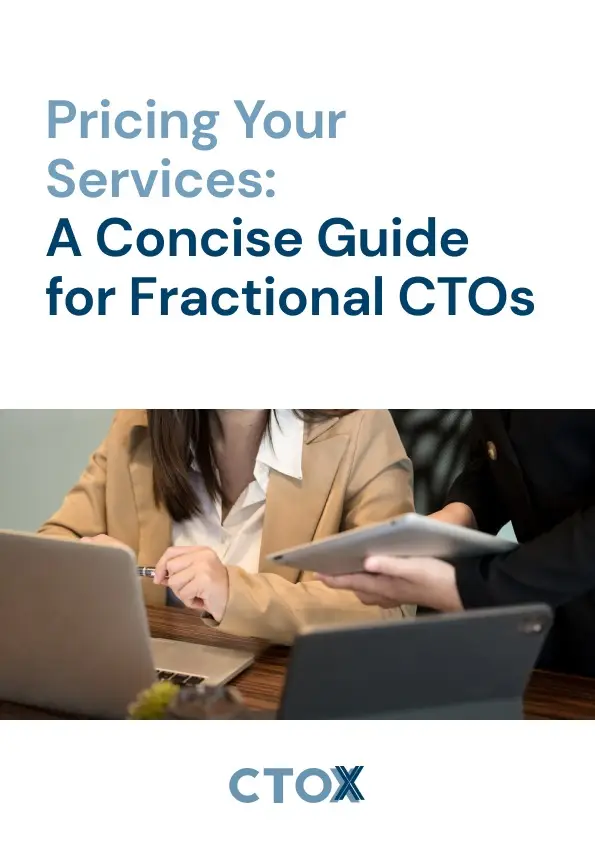Real-time cloud monitoring ensures your IT systems run smoothly by constantly tracking performance, identifying issues, and sending alerts. Here’s what you need to know:
-
Main Components:
- Data Collection: Gather metrics from servers, apps, and networks.
- Analysis: Spot patterns or problems in real time.
- Alerts: Notify teams immediately about critical issues.
-
Business Benefits:
- Minimize downtime.
- Boost performance.
- Align IT with business goals.
-
Key Elements:
- System Monitoring: Track CPU, memory, storage, and network health.
- Application Monitoring: Measure app performance, user experience, and resource usage.
- Log Management: Centralize, analyze, and filter logs for better troubleshooting.
-
Tool Selection Tips:
- Look for features like real-time metrics, automated alerts, and dashboards.
- Consider scalability, integration, and cost.
- Fractional CTOs (cost: $3,000–$15,000/month) can help optimize tool setup and monitoring strategies.
-
Setup Guidelines:
- Define goals (e.g., performance, cost, security).
- Create effective alert systems with clear priorities.
- Plan responses for fast issue resolution.
Quick Tips:
- Use centralized dashboards for multi-cloud environments.
- Automate tracking to save time and reduce errors.
- Secure your monitoring setup with role-based access and encryption.
Real-time monitoring saves costs, prevents downtime, and improves system performance. Start by assessing your needs, choosing the right tools, and setting clear goals.
Beginner’s Guide to Real-Time Monitoring & Observability
Main Elements of Cloud Monitoring
Real-time cloud monitoring involves several interconnected components working together to ensure systems run smoothly. Here’s a breakdown of the key elements involved.
System and Network Monitoring
This focuses on tracking the infrastructure that supports cloud services. It includes monitoring:
- Server Resources: CPU usage, memory consumption, disk space, and I/O performance
- Network Performance: Bandwidth, latency, packet loss, and connection status
- Storage Systems: Capacity, read/write speeds, and data redundancy levels
Consistent data collection helps identify and address issues before they escalate.
Application Monitoring
Application monitoring ensures apps run efficiently and deliver a good user experience. Metrics tracked include:
- Performance: Response times, throughput, and error rates
- User Experience: Page load times, transaction success rates, and service availability
- Resource Usage: Patterns specific to the application’s resource consumption
Log Management
Log management involves tracking system and app behavior to troubleshoot problems and optimize performance. It includes:
- Centralized Collection: Gathering logs from all cloud resources in one place
- Analysis: Processing log data to spot trends and potential issues
- Filtering: Highlighting important data while reducing irrelevant noise
The table below outlines key metrics to monitor across different log types:
| Log Type | Key Metrics | Monitoring Frequency |
|---|---|---|
| System Logs | Error rates, resource usage | Real-time |
| Application Logs | User actions, error traces | Every 1–5 minutes |
| Security Logs | Access attempts, violations | Real-time |
| Performance Logs | Response times, throughput | Every 30 seconds |
Cloud Monitoring Tools
Common Monitoring Solutions
Managing complex cloud infrastructures requires tools that offer visibility across various environments. These tools often include features like real-time metrics tracking, automated alerts, customizable dashboards, and easy integration with your existing systems. Before committing to a tool, ensure it aligns with both your technical needs and business goals.
Tool Selection Criteria
When choosing a monitoring tool, make sure it works well with your current technology stack. Look at features like alert management, data retention policies, and reporting options. On the business side, think about your budget, your team’s expertise, and any compliance requirements you need to meet.
According to research, hiring a fractional CTO can help businesses become more data-focused by improving technology operations and growth strategies.
Once you’ve outlined your criteria, compare tools based on these specific factors.
Tool Comparison Guide
Bringing in expert guidance, such as a fractional CTO, can improve your decision-making and implementation process in complex cloud setups. Some key factors to consider when comparing tools include scalability, pricing, integration options, customer support, and deployment methods. Fractional CTOs, typically costing between $3,000 and $15,000 per month, can assist by providing expertise in:
- Infrastructure Assessment: Pinpoint inefficiencies to ensure the monitoring solution fits your evolving needs.
- Implementation Strategy: Set up tools with appropriate alert thresholds and response systems.
- Optimization & Scaling: Adapt monitoring tools as your business grows or changes.
sbb-itb-4abdf47
Monitoring Setup Guidelines
Setting Monitoring Goals
Effective cloud monitoring starts with defining goals that align with your business needs. Conducting a tech audit helps identify critical monitoring areas and eliminates inefficiencies. These goals should connect to the metrics and systems previously outlined, ensuring a well-rounded monitoring approach.
Here are some key areas to focus on when setting monitoring goals:
- Performance Metrics: Measure response times, resource usage, and system uptime.
- Cost Management: Keep an eye on cloud resource usage and spending trends.
- Security Compliance: Continuously monitor security protocols and ensure compliance standards are met.
- User Experience: Evaluate application performance from the perspective of end users.
Alert System Setup
An effective alert system balances addressing critical issues with avoiding unnecessary notifications. Your alert setup should align with your business goals and operational needs.
Below is an example of how to prioritize alerts:
| Priority Level | Response Time | Notification Method | Example Triggers |
|---|---|---|---|
| Critical | Less than 5 min | Phone, SMS, Email | System outages, security breaches |
| High | Less than 15 min | SMS, Email | Performance dips, resource limits |
| Medium | Less than 1 hour | Unusual traffic, minor service issues | |
| Low | Less than 24 hours | Dashboard | Routine updates, maintenance tasks |
After setting up alerts, the next step is to create a clear and actionable response plan.
Problem Response Planning
A strong response plan connects alerts to specific procedures, ensuring fast resolutions and minimizing disruptions to the business.
Key elements to include:
- Team Roles: Assign responsibilities and define escalation paths for each alert level. Escalate to senior leadership when necessary.
- Documentation and Procedures: Keep detailed runbooks for common issues and ensure all response steps are regularly updated.
- Review and Optimization: Periodically evaluate and refine alert thresholds and response strategies based on real-world data.
Fractional CTOs conduct regular reviews, monitor key performance indicators, and provide expert guidance to ensure your technology aligns with your business objectives.
Common Problems and Fixes
When using monitoring tools and following setup guidelines, challenges like too many alerts, managing multiple cloud environments, and ensuring security often arise. Here’s how to tackle them.
Handling Alert Overload
Too many alerts can cause teams to overlook critical issues. The solution? Filter and prioritize alerts with a clear system.
| Alert Category | Filtering Strategy | Implementation Tips |
|---|---|---|
| Critical Systems | Use dynamic thresholds | Adjust baselines based on past performance data |
| Performance Metrics | Group related alerts | Combine similar alerts to reduce unnecessary noise |
| Resource Usage | Set progressive triggers | Trigger alerts only after repeated or severe issues |
| Security Events | Apply contextual filtering | Use threat intelligence to focus on real risks |
Intelligent alert management systems can cut down unnecessary noise. A fractional CTO from CTOx can assist with audits and optimizations to make these systems work seamlessly, setting the stage for effective multi-cloud monitoring.
Managing Multiple Cloud Environments
Handling multiple cloud platforms can get complicated, but a unified approach simplifies the process. Here’s what to focus on:
- Centralized Dashboard: Build a single dashboard to monitor all cloud environments. This reduces complexity and ensures consistency.
- Standardized Metrics: Use the same metrics across all platforms to make reporting easier and comparisons accurate.
- Automated Tracking: Automate resource monitoring to spot cost-saving opportunities and avoid waste.
Security Requirements
Once alerts are under control and cloud environments are streamlined, securing the monitoring systems becomes essential. Here are the key steps:
- Access Control: Use role-based access control (RBAC) to limit who can interact with monitoring tools.
- Data Encryption: Encrypt monitoring data both during transmission and when stored.
- Compliance Monitoring: Automate checks to ensure compliance with regulations.
- Audit Trails: Keep detailed logs of access and system changes for accountability.
A fractional CTO from CTOx can help design strategies that balance security with system efficiency, ensuring your monitoring setup stays effective and protected.
Conclusion
Main Points Review
Real-time cloud monitoring is essential for today’s IT setups. When done right, it reduces costs and improves performance by spotting and addressing issues before they cause downtime.
Industry data shows that businesses working with fractional CTOs can save over $200,000 annually. These savings come from smarter resource use, less downtime, and faster issue resolution.
To make cloud monitoring work for you, focus on these areas:
- Strategic Implementation: Tie monitoring goals directly to your business needs.
- Unified Management: Manage all cloud environments from one place.
- Proactive Response: Set up clear alerts and response plans.
- Security Integration: Ensure compliance while protecting your systems.
These steps can help you start seeing results quickly.
Getting Started Steps
You can roll out cloud monitoring in three simple steps:
-
Conduct Initial Assessment
Begin with a detailed review of your current systems. A fractional CTO can assist in identifying weak spots and opportunities for improvement. -
Establish Monitoring Framework
Set up a monitoring system tailored to your business goals. Expect costs to range between $3,000 and $15,000 per month, depending on your infrastructure’s size and complexity. -
Implement Oversight
Use this table to guide oversight phases and expected outcomes:Phase Focus Outcomes Assessment Infrastructure audit Clear understanding of current state Setup Deploy monitoring tools Real-time system visibility Optimization Develop KPI scorecards Better decisions using data Maintenance Ongoing improvements Consistent, reliable performance







